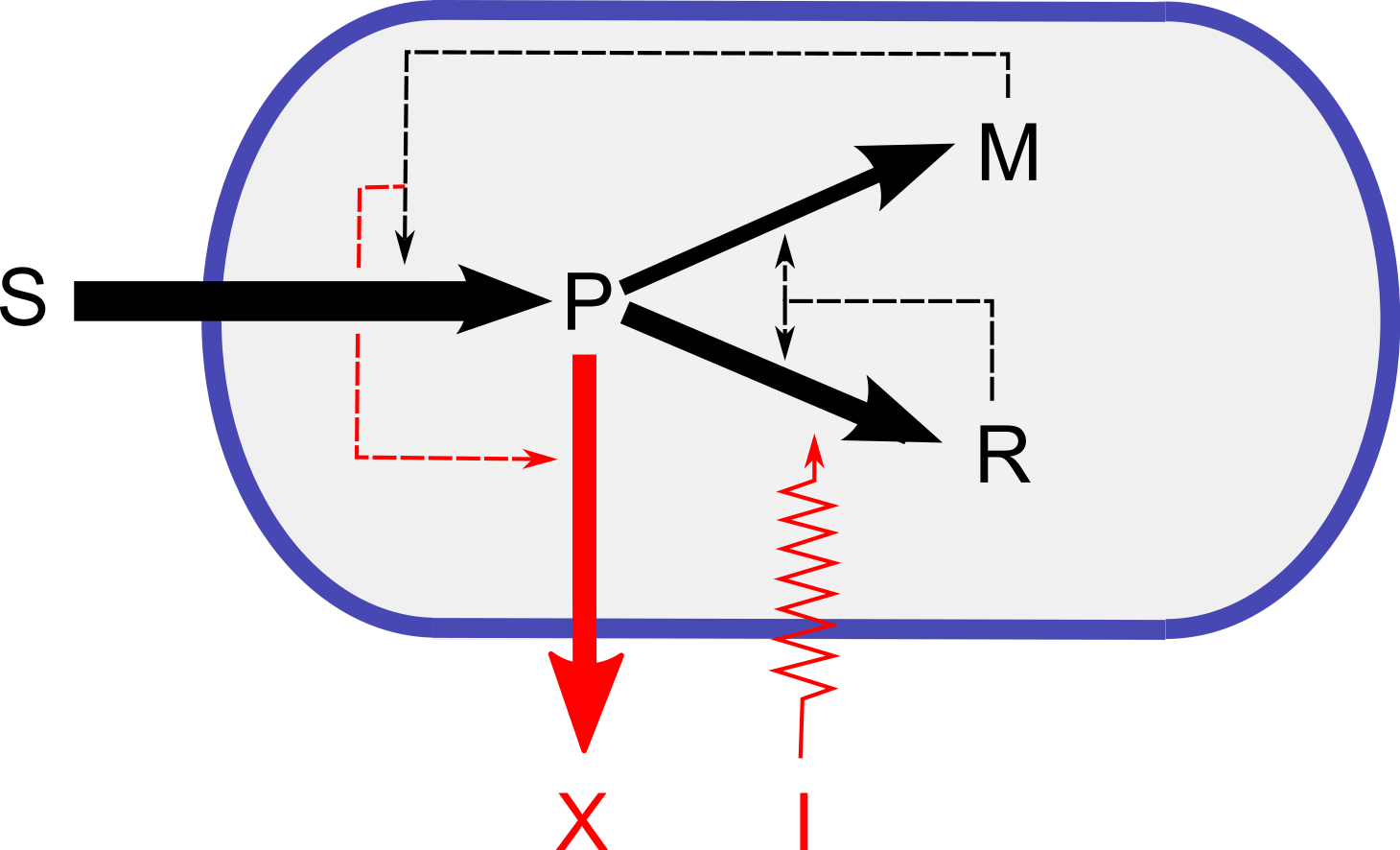- Share
- Share on Facebook
- Share on X
- Share on LinkedIn
Resource allocation in bacteria
Cathy Bouchenot, Eugenio Cinquemani, Hans Geiselmann, Hidde de Jong, Aline Marguet, Delphine Ropers, Noël Scaramozzino

Bacterial growth involves the conversion of nutrients in the environment into biomass. This process has been successfully analysed from the perspective of resource allocation, i.e. the allocation of limiting cellular resources to the biochemical reactions involved in biomass synthesis. We are developing mathematical models that describe, at a coarse-grained level, bacterial metabolism and protein synthesis, proteins constituting both the major component of biomass and a limiting resource for the progress of biochemical reactions. Predictions of the models are tested using kinetic experiments with fluorescent reporter genes under controlled conditions, at the level of cell populations and individual cells.
Re-engineering of resource allocation strategies in microorganisms
Cathy Bouchenot, Eugenio Cinquemani, Hans Geiselmann, Hidde de Jong, Aline Marguet, Delphine Ropers, Noël Scaramozzino
In addition to providing a better understanding of bacterial growth, the analysis of resource allocation strategies may also provide leads for increasing the production of components of biotechnological interest, such as biofuels or drugs. We are using genomic engineering methods to modify the control of bacterial metabolism and protein synthesis, enabling resources to be redirected from growth to the production of selected components. The models described above, in combination with optimal control methods, enable us to propose optimal production conditions for the modified strains. The resulting predictions are experimentally verified by means of a system of mini-bioreactors.
- Share
- Share on Facebook
- Share on X
- Share on LinkedIn